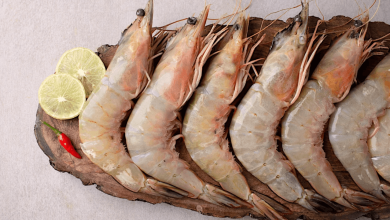
What is the Difference Between Dry-Aged and Wet-Aged Steak?
What is the Difference Between Dry-Aged and Wet-Aged Steak?
When it comes to steak, the age and preparation of the meat can significantly influence its flavor and texture. At Rosebud Steakhouse, we take pride in offering a true Chicago steakhouse experience by serving both dry-aged and wet-aged cuts. But what exactly are these processes, and how do they impact the final product on your plate? In this blog post, we’ll delve into the differences between dry-aged and wet-aged steak, exploring how each method affects the taste, texture, and overall dining experience.
Understanding Dry Aging
Dry aging is a traditional method used to enhance the flavor and tenderness of steak. This process involves hanging the beef in a controlled, chilled environment for an extended period, allowing natural enzymes to break down the muscle tissue. This aging method can last from a few weeks to several months. During this time, the meat develops a unique, concentrated flavor and a tender texture. At Rosebud Steakhouse, our dry-aged steaks are meticulously prepared to ensure they deliver an exceptional dining experience.
What is Wet Aging?
Wet aging, on the other hand, involves sealing the beef in vacuum-packed bags and aging it in its own juices in a refrigerated environment. This method typically takes place over a shorter period, usually a few days to a couple of weeks. Wet aging helps the steak retain its moisture, resulting in a tender and juicy texture. While it may not develop the same deep flavors as dry aging, wet aging ensures a consistently tender steak that is popular among many steak lovers.
Key Differences Between Dry and Wet Aging
The primary differences between dry-aged and wet-aged steak lie in their flavor profiles and textures. Dry-aged steak boasts a rich, nutty, and slightly earthy flavor due to the moisture loss and enzymatic breakdown during the aging process. Wet-aged steak, however, maintains a milder flavor profile and a juicier texture, as it retains more of its original moisture content. These differences can influence your choice depending on your personal taste preferences.
The Dry Aging Process: How to Dry Age a Steak
If you’re interested in understanding how to dry age a steak, it involves a few critical steps. First, the steak is placed in a temperature-controlled environment with low humidity to prevent spoilage. The meat is left to age for a period ranging from 2 to 6 weeks or more, depending on the desired intensity of flavor. Regular monitoring of temperature and humidity is essential to ensure the best results. At Rosebud Steakhouse, our expert team handles this process with precision to deliver top-quality dry-aged cuts.
The Wet Aging Process
Wet aging is simpler compared to dry aging. The steak is vacuum-sealed and refrigerated, allowing the meat to age in its own juices. This method is less labor-intensive and requires less monitoring, making it a popular choice for many steakhouses. Wet-aged steak tends to be more affordable and is known for its tender and juicy characteristics.
Flavor and Texture Comparison
The differences in flavor and texture between dry-aged and wet-aged steaks are significant. Dry-aged steaks have a more intense, concentrated flavor with a firmer texture, often described as having a nutty or earthy taste. Wet-aged steaks, in contrast, are tender and juicy with a milder flavor, often preferred for their consistency and moisture content. Choosing between them depends on whether you prefer a bold flavor or a tender, juicy bite.
Cost and Availability
Dry-aged steaks typically cost more than wet-aged steaks due to the extended aging process and higher waste factor from trimming. The specialized equipment and controlled environment required for dry aging contribute to these higher costs. Wet-aged steaks are more widely available and generally more affordable, making them a popular choice for many consumers. At Rosebud Steakhouse, we offer both options to cater to diverse preferences.
The Impact of Aging on Steak Quality
Both dry aging and wet aging have their merits and impact the steak’s quality differently. Dry aging enhances the flavor and texture, resulting in a steak with a more complex taste and firmer texture. Wet aging preserves moisture, leading to a tender and juicy steak with a more straightforward flavor profile. Understanding these impacts helps diners make informed choices based on their taste preferences and desired dining experience.
Choosing the Right Steak for Your Preference
When deciding between dry-aged and wet-aged steak, consider what qualities you value most in your steak. If you prefer a robust, concentrated flavor and a more complex texture, dry-aged steak is the way to go. For those who enjoy a tender, juicy steak with a more delicate flavor, wet-aged steak might be the better choice. At Rosebud Steakhouse, we offer both options, ensuring that every guest finds their perfect steak.
Conclusion
In summary, the difference between dry-aged and wet-aged steak comes down to flavor, texture, and preparation methods. Dry aging offers a rich, complex flavor and a firmer texture, while wet aging provides a tender, juicy steak with a milder taste. At Rosebud Steakhouse, we take great pride in serving both types of steak, ensuring that each guest enjoys a memorable dining experience. Whether you prefer the bold flavors of dry-aged steak or the tender juiciness of wet-aged cuts, our expertly prepared steaks are sure to satisfy your cravings.









